When considering a husky crate, its important to learn about the types of crates and ensure proper cage size for their comfort.
| Minimum Crate Size for a Husky | 36 inches (Length) x 23 inches (Width) x 25 inches (Height) |
| Preferred Crate Size for an Adult Husky | 42 inches (L) x 28 inches (W) x 31 inches (H) |
| Wire Crates | Good ventilation, visibility, and adaptability with dividers |
| Plastic Crates | Durable, more enclosed, suitable for travel, and often airline approved |
| Soft-Sided Crates | Lightweight, portable, but not ideal for Huskies that chew or are not crate-trained |
| Heavy-Duty Crates | Stronger build for escape artists, often more secure with reinforced locks and metal construction |
| Collapsible/Foldable Crates | Convenient for storage and transport, typically wire crates that fold flat |
| Furniture-Style Crates | Designed to blend with home decor, often made of wood or a combination of materials |
| Crate Training Tips | Introduce gradually, use positive reinforcement, keep cozy with bedding, ensure its escape-proof for Huskies |
| Legal Requirements for Travel | Must meet IATA regulations if used for airline travel, consider size, strength, and food/water accessibility |
Huskies are medium-sized dogs, with adult males typically reaching a height of 21-23.5 inches at the shoulders, while adult females generally measure 20-22 inches. In terms of weight, adult male huskies usually weigh between 45-60 pounds, and adult females weigh around 35-50 pounds.
These figures indicate that huskies require adequate space to move comfortably within their crate. Furthermore, considering the energetic nature of huskies and their propensity for physical activity, it’s imperative to select a crate that allows ample room for the dog to stand, turn around, and lay down without feeling confined.
As huskies grow rapidly during their first year, it’s crucial to anticipate their growth patterns when choosing a crate, ensuring that it remains suitable throughout their developmental stages.
Husky cage size learn about types of crates
Another consideration is the long, thick double coat that huskies possess.
This fur provides insulation and protection in various climates, and it’s crucial to consider this aspect when selecting a crate, as proper ventilation is essential to prevent overheating, especially in warmer environments. Additionally, the crate should accommodate the potential increase in size due to the husky’s dense fur, ensuring that the dog remains comfortable within the confined space.
Understanding the growth and size nuances of huskies is essential for selecting the right crate, but it's also important to differentiate between breeds. Discover the distinctions between a Wooly Husky and a Siberian Husky, which may impact your crate selection, by exploring our detailed comparison at Wooly Husky vs Siberian Husky.

The Ideal Crate Size for a Husky
To determine the ideal crate size for your husky, it’s essential to consider their adult dimensions. The cage should provide enough room for the husky to stand up, turn around, and stretch comfortably.
An average adult husky typically measures around 20-23 inches in height, so a crate with a height of around 24 inches would be suitable. In terms of length, the crate should be approximately 36-42 inches to accommodate the husky’s full body length when lying down.
Additionally, the crate should be wide enough to allow the husky to lay comfortably with their paws outstretched, requiring a width of approximately 24-30 inches. By adhering to these size guidelines, you can ensure that your husky has a comfortable and secure space within their crate, promoting their overall well-being and contentment.
Husky cage size learn about types of crates
Remember to choose a crate size that aligns with the adult dimensions of a husky to provide adequate comfort and freedom of movement within the enclosure.
For husky owners interested in ensuring their pet's comfort and well-being, understanding proper crate dimensions is just the beginning. Dive deeper into husky care with our comprehensive guide on managing shedding: Discover Ten Handy Tips to Reduce Husky Shedding.

Types of Crates Available for Huskies
When selecting a crate for a husky, it’s essential to consider the various types available to determine the most suitable option. Husky cage size learn about types of crates to understand the benefits and limitations of each.
Wire crates offer excellent ventilation and visibility, making them ideal for dogs that may experience separation anxiety. Plastic crates provide a more enclosed and den-like environment, which can help keep huskies calm and secure.
Soft-sided crates are lightweight and portable, making them convenient for travel or temporary use. Heavy-duty crates are designed to withstand the strength and energy of huskies, featuring reinforced materials and secure locking mechanisms to prevent escapes.
Understanding the distinct characteristics of wire, plastic, soft-sided, and heavy-duty crates will enable husky owners to make an informed decision based on their dog’s individual needs.
Husky cage size learn about types of crates
With a suitable crate in mind for your husky, consider exploring the world of husky hybrids known for their low-shedding coats. Discover the perfect husky mix for your lifestyle and home by visiting Husky Mixes That Don't Shed.
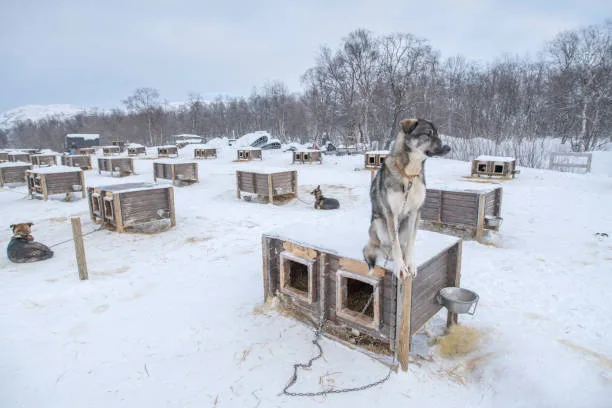
Pros and Cons of Different Husky Crates
Choosing the right crate for your husky is crucial, so it’s important to weigh the pros and cons of each crate type. Wire crates are popular for their ventilation and visibility, but they may not provide the security that some huskies require.
Plastic crates offer more seclusion and are often airline-approved for travel, but they may not be the best option for dogs who enjoy a wide field of vision. Soft-sided crates are lightweight and easily portable, making them suitable for travel, but they may not withstand the energy and strength of a husky.
Heavy-duty crates are incredibly durable and escape-proof, but they can be heavy and less convenient for transportation. Understanding the pros and cons of each husky crate type will help you make an informed decision that suits your dog’s specific needs.
Husky cage size learn about types of crates is essential for ensuring your husky’s safety and comfort.
Considering wire crates for ventilation and visibility
Assessing the benefits and limitations of plastic crates
Exploring the portability of soft-sided crates for travel
Weighing the durability and stability of heavy-duty crates
Understanding the various crate options is crucial, but the well-being of your husky extends beyond just comfortable surroundings. For insights on optimizing your furry friend’s digestive health, explore our guide to top diets for Huskies with sensitive stomachs.

Important Features of a Husky Crate
When selecting a husky crate, it’s crucial to consider a few key features to ensure the comfort and safety of your pet. Adequate ventilation is essential to maintain airflow and prevent the crate from feeling stuffy.
This is especially important for huskies, given their thick coats and tendency to overheat. Look for crates with ventilation openings on multiple sides to promote air circulation.
Additionally, ease of cleaning is paramount for maintaining a hygienic environment for your husky.
Opt for crates with removable trays or easy-to-clean surfaces that allow for hassle-free upkeep. This feature simplifies the process of keeping the crate clean and sanitary, contributing to your husky’s overall well-being.
Security is another crucial aspect to consider when selecting a crate for your husky.
The crate should have sturdy latches or locks to prevent escape attempts, especially considering the husky’s energetic nature. A secure crate not only ensures the safety of your pet but also provides peace of mind for you as an owner.
For a deeper understanding of the majestic Husky's traits and how they compare to their wild counterparts, explore our comprehensive article, The Husky and The Wolf: A Side-By-Side Comparison. This resource will provide you with greater insight into the breed's distinctive characteristics and ancestral connections.
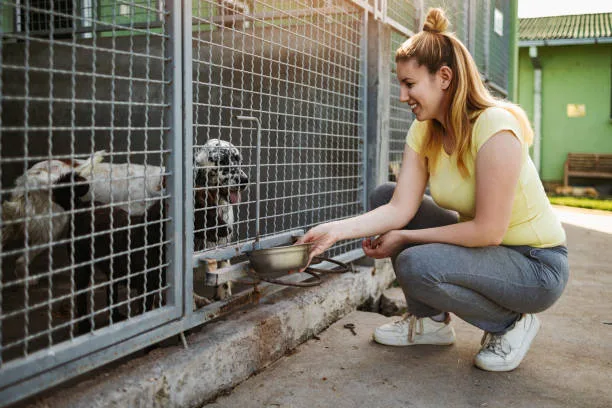
Crate Training Your Husky
Crate training your Husky is essential for promoting a safe and comfortable environment for both you and your pet. This training method helps in providing a secure space for your Husky while preventing destructive behavior and reducing anxiety.
It also facilitates travel and ensures the dog’s safety in various situations, such as vet visits or emergencies. Proper crate training also aids in housebreaking and establishing a routine for your Husky.
It is important to introduce the crate gradually, making it a positive space for the dog, and to use positive reinforcement techniques during the training process. Through consistent and patient crate training, you can ensure that your Husky views the crate as a cozy retreat rather than confinement..
To delve deeper into creating harmonious environments for unique canine companions, explore the nuances of a fascinating breed blend. Discover the characteristics and care specifics of the Siberian Husky-English Bulldog Mix and see how crate training fits into their world.
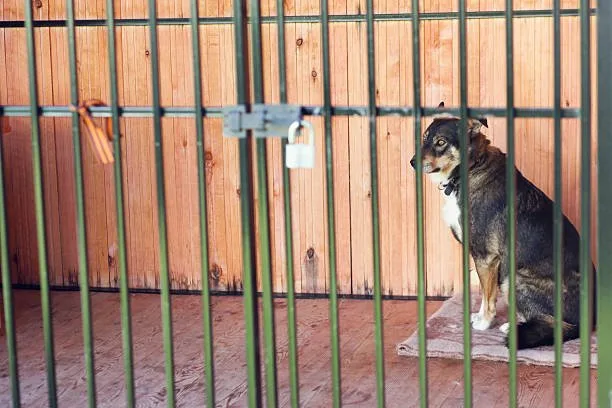
Adjusting Crate Size as Your Husky Grows
As your husky grows, it’s essential to adjust the crate size accordingly to ensure their comfort and safety. Understanding the growth patterns of huskies is crucial in determining when to upgrade to larger crates.
Keep an eye on your husky’s size and behavior to gauge when they are feeling cramped or restricted in their current crate. Additionally, consider upgrading to a larger crate if your husky seems hesitant to enter or shows signs of discomfort when inside their current one.
Properly adjusting the crate size as your husky grows will contribute to their overall well-being and promote positive experiences with confinement. Remember, providing ample space for your husky in their crate is essential for their development and contentment.
Regularly evaluating and adapting the crate size to accommodate your husky’s growth ensures a comfortable and safe environment for them.
On Quora about: Husky cage size learn about types of crates
Ultimately, ensuring that the crate offers sufficient space for your husky to stand, turn around, and stretch comfortably is crucial for their well-being.
Ensuring your growing pup has the right crate size contributes to their comfort and safety. For further guidance on maintaining your husky's well-being, uncover effective strategies by reading effective strategies for encouraging your lethargic husky.
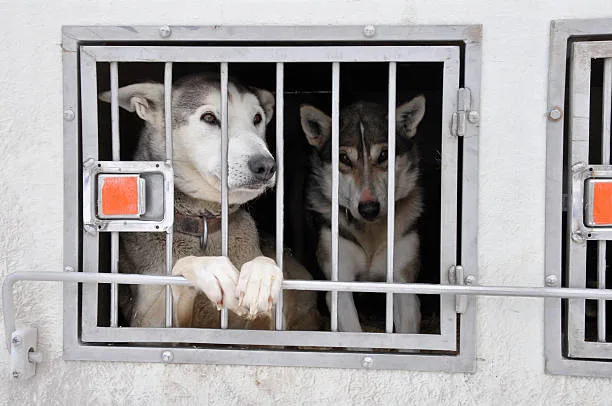
Frequently Asked Questions About Husky Crates
Q: What size crate do I need for my husky?
A: When choosing a crate size for your husky, it’s crucial to consider your dog’s adult size and allow for ample room to stand, turn around, and stretch comfortably. The ideal crate size for a husky is typically 36 to 42 inches in length to accommodate their medium to large build.
Q: What are the best types of crates for huskies?
A: Husky cage size learn about types of crates can include wire crates, plastic crates, and heavy-duty crates.
Wire crates offer good ventilation and visibility, while plastic crates provide a more den-like environment. Heavy-duty crates are suitable for strong and energetic huskies that may try to escape.
Q: How do I crate train my husky?
A: Crate training is essential for huskies to acclimate to their crate as a safe and comfortable space.
Start by associating positive experiences with the crate, gradually introducing your husky to the crate for short periods, and rewarding calm behavior inside the crate.
Q: How can I help my husky adjust to the crate?
Reddit Husky cage size learn about types of crates
A: To help your husky adjust to the crate, place familiar bedding and toys inside, keep the crate in a quiet area, and avoid forcing your husky into the crate. Additionally, using treats to create positive associations with the crate can aid in the adjustment process.
To delve deeper into the nuances of effectively training your husky and ensuring a comfortable crate experience, explore our comprehensive guide. Discover valuable insights and tips at Husky Training Essentials.
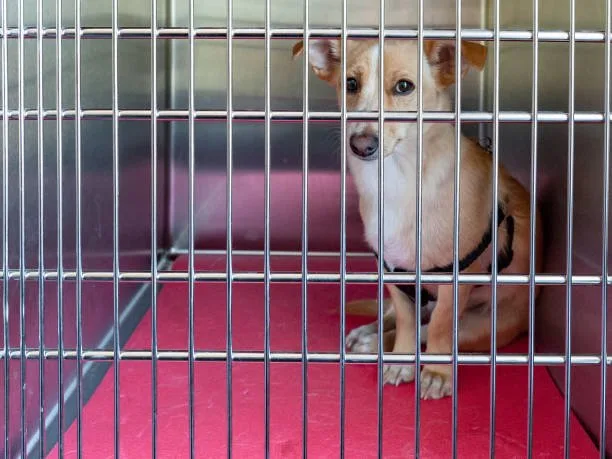
Selecting Spacious and Durable Crates for Huskies
American Kennel Club: Husky cage size learn about types of crates
When selecting a crate for your husky, it is essential to prioritize ample space and durability to ensure the dog’s safety and longevity. Large, sturdy, and escape-proof options are crucial criteria to consider.
Durable dog crates specifically designed for large breeds like huskies are essential for enduring the energetic nature of these animals. In this context, it is crucial to compare various large dog crate types, including heavy-duty and foldable wire crates, to identify the best options that prevent escape and withstand the strength of huskies.
To delve deeper into the world of secure and robust canine enclosures, we invite you to explore our detailed guide on crafting the perfect habitat for your husky companion. Discover the art of selecting the ultimate dog crate by visiting our comprehensive article, Engaging Husky Crate Selection Strategies.
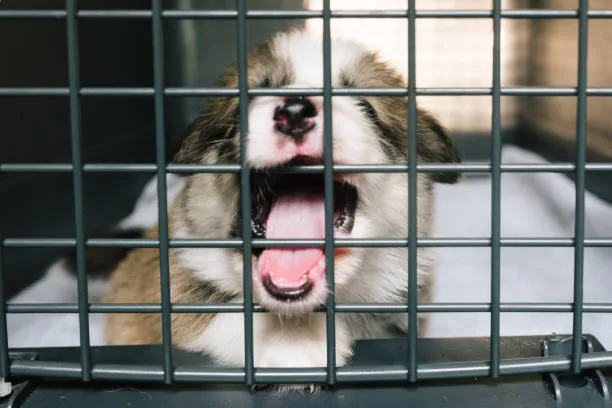
Adaptable Husky Crating Solutions for Indoor and Outdoor Use
Huskies require adaptable crating solutions to accommodate their indoor and outdoor needs. When it comes to indoor enclosures, it’s essential to consider the versatility they offer for housing a husky.
Owners should look for properly ventilated husky kennels to ensure adequate airflow and comfort for their pets. Additionally, the adaptability of foldable wire crates makes them a convenient option for indoor use, as they can be easily folded and stored when not in use.
For outdoor housing, specific considerations such as weather resistance and security are paramount.
It’s crucial to select sturdy outdoor crates that can withstand various weather conditions and provide a secure environment for huskies. Furthermore, utilizing exercise pens in outdoor settings can offer huskies a safe area for play and exercise while ensuring they remain contained within a designated space.
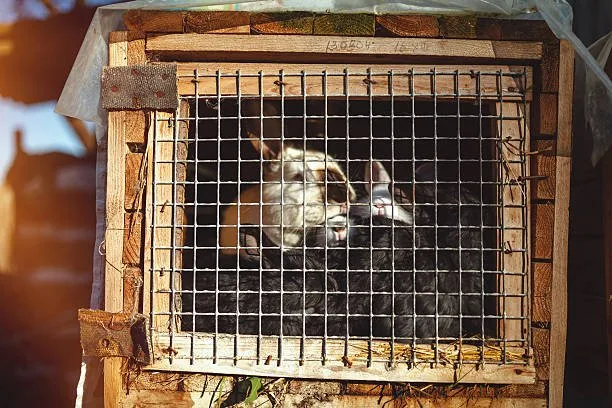
Comfort and Convenience Features in Husky Crates
Husky crate comfort and convenience features are essential for providing a cozy and safe space for your pet. When considering a husky crate, it’s important to prioritize the availability of appropriate crate bedding to ensure your husky has a soft and comfortable area to rest.
Additionally, easy-to-clean surfaces are crucial for maintaining a hygienic environment and managing occasional accidents. Owners who frequently travel with their huskies will benefit from learning about the availability of airline-approved husky carriers, allowing for seamless transportation while adhering to travel regulations.
Emphasizing the installation of comfortable bedding and a well-ventilated kennel setup is vital for promoting the overall well-being of your beloved husky.
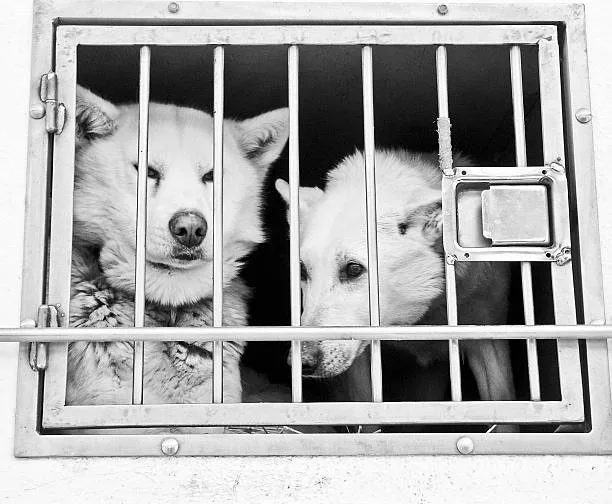
Sizing and Setup Guide for Husky Crate Training
To begin, it’s crucial to select the right crate size for your husky to ensure their comfort and safety. When it comes to sizing the crate, consider the adult size of your husky and choose a crate that allows them to stand, turn around, and lie down comfortably.
It’s also important to learn about the types of crates available for huskies, including wire, plastic, soft-sided, and heavy-duty options. Each type has its pros and cons, so it’s essential to understand the suitability of each for your husky’s needs.
Additionally, crate training is an integral part of acclimating your husky to their new space. Take the time to learn about the nuances of crate training, including making the crate a positive and appealing space for your husky.
Gradually introducing your husky to the crate with positive reinforcement and patience is key to fostering a positive experience with confinement. Remember to be consistent and patient during the crate training process to ensure a smooth transition for your husky..

Conclusion: Ensuring Your Husky’s Comfort and Safety
In conclusion, ensuring your husky’s comfort and safety involves making an informed decision when it comes to selecting the right crate. It is essential to prioritize the wellbeing of your husky by providing a comfortable and secure space that meets their specific needs.
Understanding the Husky cage size and learning about the types of crates available allows you to make a well-informed choice that promotes a sense of security and relaxation for your pet. By investing time in research and considering the individual requirements of your husky, you can create a safe and cozy environment that nurtures your pet’s physical and emotional health.

Leave a Reply